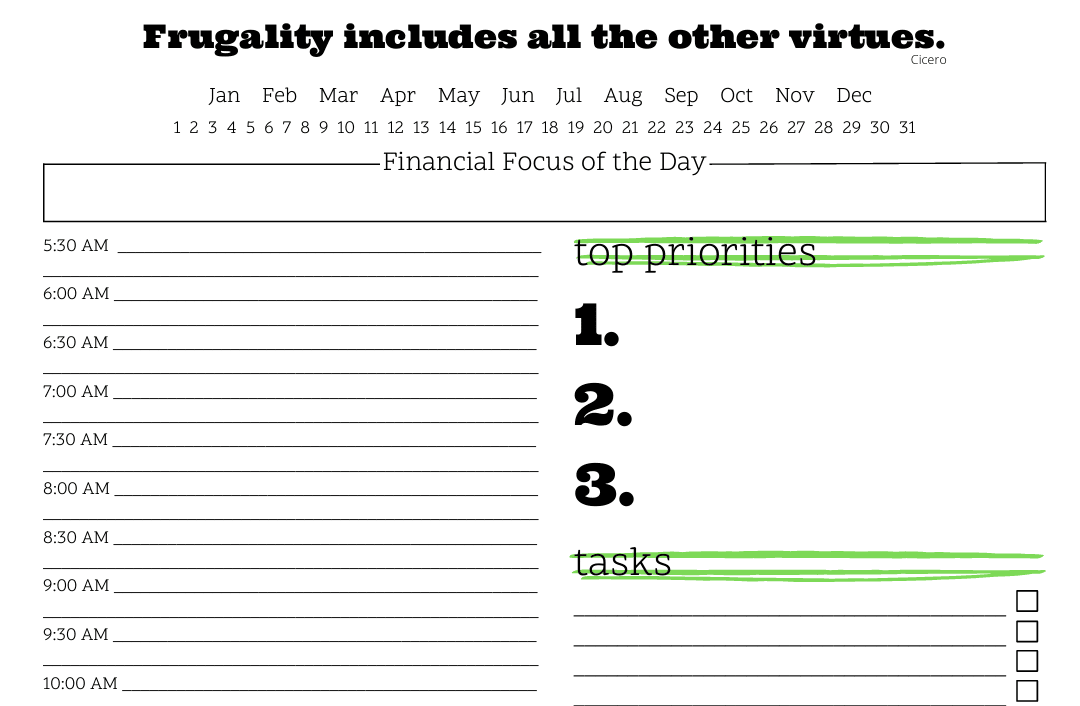This article may contain references to products or services from one or more of our advertisers or partners. We may receive compensation when you click on links to those products or services. Nonetheless, our opinions are our own.
The information presented in this article is accurate to the best of our knowledge at the time of publication. However, information is subject to change, and no guarantees are made about the continued accuracy or completeness of this content after its publication date.
- Key Highlights
- Introduction
- Understanding the Basics of Leasing
- The Definition of a Lease Agreement
- Different Types of Leases
- Preparing for a Lease
- Essential Documents and Information Needed
- Assessing Your Needs and Budget
- Step-by-Step Guide to Navigating Lease Agreements
- Rights and Responsibilities of Lessees and Lessors
- What Lessees Need to Know
- What Lessors Expect
- Breaking Down Lease Costs
- Understanding Rent, Deposits, and Fees
- Hidden Costs in Lease Agreements
- Conclusion
- Frequently Asked Questions
- Recommended Reads
Key Highlights
- Leasing a car can be cheaper than buying it, especially for a short period.
- When you lease a car, you do not own it. You only get to use it for a set period.
- There are limits on how many miles you can drive. If you exceed this, additional charges will apply.
- You typically need good credit and a steady income to lease a car.
- It’s important to understand the terms and costs of leasing before signing a lease agreement.
Introduction
This guide will help you understand lease agreements better. We’ll explain the basics of leasing, cover different types of leases, and provide essential considerations before you sign anything. Whether you want a new vehicle or are curious about leasing, this guide has the necessary information. We’ll also dive into key components of a lease, like the lease term and monthly payments, so you can understand how leasing companies structure these agreements.
Understanding the Basics of Leasing
Leasing might seem complicated at first, but it’s straightforward. You sign a contract with a leasing company, the lessor, which allows you to use a vehicle or another item for a set period. This period is called the lease term. The lease term typically ranges from 24 to 36 months for cars, although it can vary depending on the asset and leasing company.
During the lease term, you’ll make monthly payments to the lessor. These payments are usually lower than the payments for buying a new car, because you’re only paying for the car’s depreciation (the loss in value during the lease period), not the entire price of the car.
The Definition of a Lease Agreement
A lease agreement is a legal contract between a leasing company (the lessor) and a person (the lessee) who wants to use an asset, such as a car or apartment. The agreement outlines the terms and conditions of the lease, including the lease term, payment schedule, and the responsibilities of both parties.
Reading and understanding the lease agreement before you sign it is crucial. This document protects the leasing company and the lessee by clearly stating what each party is responsible for.
Different Types of Leases
Lease agreements can apply to various assets, and the type of lease you choose can affect your monthly payments, available deals, and tax situation.
- Closed-End Lease: This is common for vehicle leases. The lease has a fixed residual value, meaning you don’t have to worry about the vehicle’s resale value at the end of the lease. You simply return the car at the end of the lease term.
- Open-End Lease: Often used for business equipment, this type of lease makes you responsible for the asset’s residual value when the lease ends. You may have to pay the difference if the asset is worth less than expected.
Preparing for a Lease
Securing a good lease starts with preparation. Before you search for a vehicle or apartment, gather your financial documents and think about what you need.
- Assess your budget: Understand what you can afford for monthly payments, insurance, and other car-related expenses. Make sure to factor in additional costs like parking and fuel.
Essential Documents and Information Needed
When you want to lease a car, the company will need specific documents to verify your identity and financial status. Typically, you’ll need to provide:
- A valid driver’s license
- Proof of insurance
- Recent pay stubs to show you have a steady income
Most companies will also check your credit score using your Social Security number. A strong credit score can lead to better lease terms and lower monthly payments. You may also need to provide the Vehicle Identification Number (VIN) of the car you’re interested in to verify its history.
Voted "Best Overall Budgeting App" by Forbes and WSJ
Monarch Money helps you budget, track spending, set goals, and plan your financial future—all in one app.
Get 50% OFF your first year with code MONARCHVIP
Assessing Your Needs and Budget
Before signing a lease agreement, evaluate your needs and your budget. Consider how far you typically drive and the space you need for passengers and cargo. Consider special features you might want, like Bluetooth connectivity or a backup camera.
Once you’ve narrowed down what you need, figure out how much you can comfortably spend each month, taking into account lease payments, insurance, fuel, and other costs.
Leasing can be overwhelming, especially for first-time lessees. This guide breaks the process down into simple steps to help you navigate your lease agreement.
Step 1: Identifying the Right Property or Asset
Start your search by exploring dealerships or showrooms. Look for a vehicle that fits your lifestyle and preferences. Depending on your needs, you might consider models like the Honda Civic or Honda Accord. Test drive several vehicles to get a feel for their performance and comfort.
Ask questions about features that matter to you, like safety ratings and fuel efficiency.
Step 2: Understanding Lease Terms and Conditions
Once you’ve chosen a vehicle, review the lease terms carefully. Pay attention to the lease term, which typically ranges from 24 to 36 months. Be sure to understand the mileage limits; if you exceed these limits, you may face additional fees when returning the car. It’s crucial to fully understand all terms before signing the agreement.
Step 3: Negotiating Lease Terms
Although some lease deals seem fixed, there’s often room for negotiation. You can negotiate the monthly payment, residual value, and lease duration. Research the fair market value of the vehicle you’re interested in and look for discounts or incentives that may apply.
A friendly, well-informed conversation with the salesperson can help you secure a better deal. Your credit score and the available lease program will influence how much room you have to negotiate.
Step 4: Signing the Lease Agreement
Before signing, carefully review every page of the lease agreement. Make sure the terms match what you discussed with the dealership. Ask for clarification if anything is unclear or differs from what you expected.
Pay attention to fees such as the security deposit, gap insurance requirements, and any end-of-lease charges. Once you’re confident, that everything is correct, sign the agreement. Your signature makes it a legal contract.
Step 5: Responsibilities During the Lease Term
To avoid extra charges, follow the lease agreement’s rules throughout the term. Perform regular maintenance, such as oil changes and tire rotations. Taking care of the vehicle will help prevent excessive wear and tear charges when you return it.
Keep detailed records of all maintenance and repairs. If you notice any issues with the car, address them promptly to avoid additional damage.
Rights and Responsibilities of Lessees and Lessors
Understanding your rights and responsibilities as a lessee—and the lessor’s expectations—is essential for a smooth leasing experience.
What Lessees Need to Know
As a lessee, you have the right to use the leased asset for the lease term, as long as you make timely payments and follow the lease terms. You’re usually protected from large repair costs if the manufacturer’s warranty covers the issue. Be sure to track your mileage and stay within the limits outlined in the agreement. You’ll also need to pay a security deposit, which is refundable if the asset is returned in good condition.
What Lessors Expect
From the lessor’s perspective, the main expectation is that lessees make timely payments and take care of the leased asset. Regular maintenance is essential to preserving the vehicle’s value, ensuring a smooth return process at the end of the lease term. A strong credit score is also important because it demonstrates your ability to manage payments.
Breaking Down Lease Costs
Understanding the costs involved in leasing is crucial to managing your finances effectively. Let’s break down the key lease costs and the hidden expenses you should watch out for.
Understanding Rent, Deposits, and Fees
Your monthly lease payment is the primary cost, but several other factors can impact your payment:
- Monthly Payment: This is based on the car’s price, expected depreciation, and the interest rate.
- Security Deposit: A refundable deposit that covers any damage beyond normal wear and tear.
- Acquisition Fee: A onetime fee the leasing company charges to process the lease.
- Disposition Fee: A fee charged at the end of the lease for returning the vehicle.
- Sales Tax: Sales tax on the lease payment, typically paid monthly.
Watch out for hidden costs such as excess mileage fees for excessive wear and tear. If you exceed the mileage limit, you may be charged up to 25 cents per additional mile.
At the end of the lease, the leasing company may assess additional charges for any damage to the car, such as dents, scratches, or worn-out seats. You’ll need to pay the difference if these costs exceed your security deposit. Knowing about these potential costs up front can help you plan accordingly.
Conclusion
Understanding lease agreements is essential for both lessees and lessors. This guide has outlined the basics of leasing, the costs involved, and the steps you need to take to navigate the leasing process. Whether you’re leasing a car or an apartment, knowing your rights and responsibilities will help you manage your lease effectively and make smart decisions.
Frequently Asked Questions
What Happens If I Break a Lease Early?
Breaking a lease early often involves paying penalty fees, including remaining lease payments and an early termination fee. It could also affect your credit score and result in losing your security deposit.
Can I Negotiate the Terms of My Lease?
Yes, lease terms can often be negotiated. Discussing the monthly payment, residual value, and lease duration with the dealership can help you secure a better deal. It’s a good idea to compare offers from different dealerships before starting negotiations.
How Does Subleasing Work?
Subleasing involves letting someone else take over your lease for the remaining term. Before doing this, get written permission from your landlord or leasing company. Both you and the sublessee should understand the responsibilities outlined in the original lease agreement.
Are There Benefits to Leasing Over Buying?
Leasing typically offers lower monthly payments than buying. It allows you to drive a new car more frequently without worrying about selling it later. However, there are mileage limits and no ownership at the end of the lease term.

Reviewed and edited by Albert Fang.
See a typo or want to suggest an edit/revision to the content? Use the contact us form to provide feedback.
At FangWallet, we value editorial integrity and open collaboration in curating quality content for readers to enjoy. Much appreciated for the assist.
Did you like our article and find it insightful? We encourage sharing the article link with family and friends to benefit as well - better yet, sharing on social media. Thank you for the support! 🍉
Article Title: What is a Lease? A Simple Guide to Understanding Leasing Agreements
https://fangwallet.com/2024/12/19/what-is-a-lease/The FangWallet Promise
FangWallet is an editorially independent resource - founded on breaking down challenging financial concepts for anyone to understand since 2014. While we adhere to editorial integrity, note that this post may contain references to products from our partners.
The FangWallet promise is always to have your best interest in mind and be transparent and honest about the financial picture.
Become an Insider

Subscribe to get a free daily budget planner printable to help get your money on track!
Make passive money the right way. No spam.
Editorial Disclaimer: The editorial content on this page is not provided by any of the companies mentioned. The opinions expressed here are the author's alone.
The content of this website is for informational purposes only and does not represent investment advice, or an offer or solicitation to buy or sell any security, investment, or product. Investors are encouraged to do their own due diligence, and, if necessary, consult professional advising before making any investment decisions. Investing involves a high degree of risk, and financial losses may occur including the potential loss of principal.
Source Citation References:
+ Inspo












































